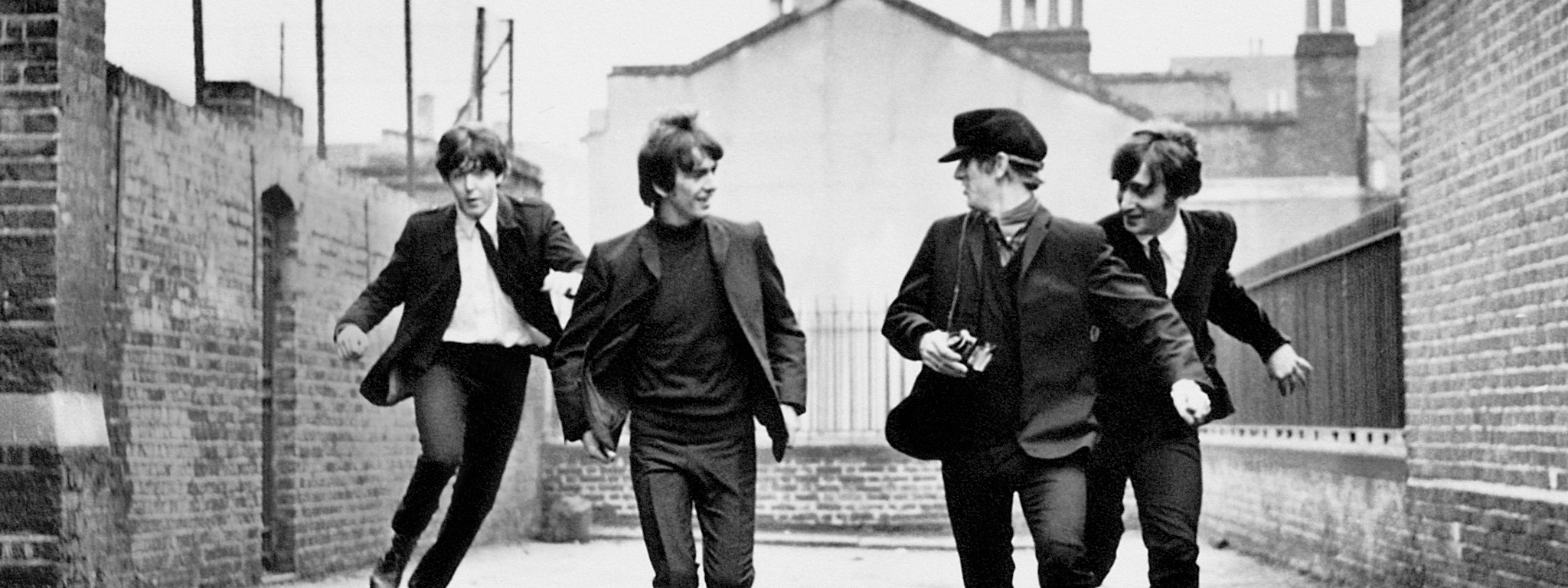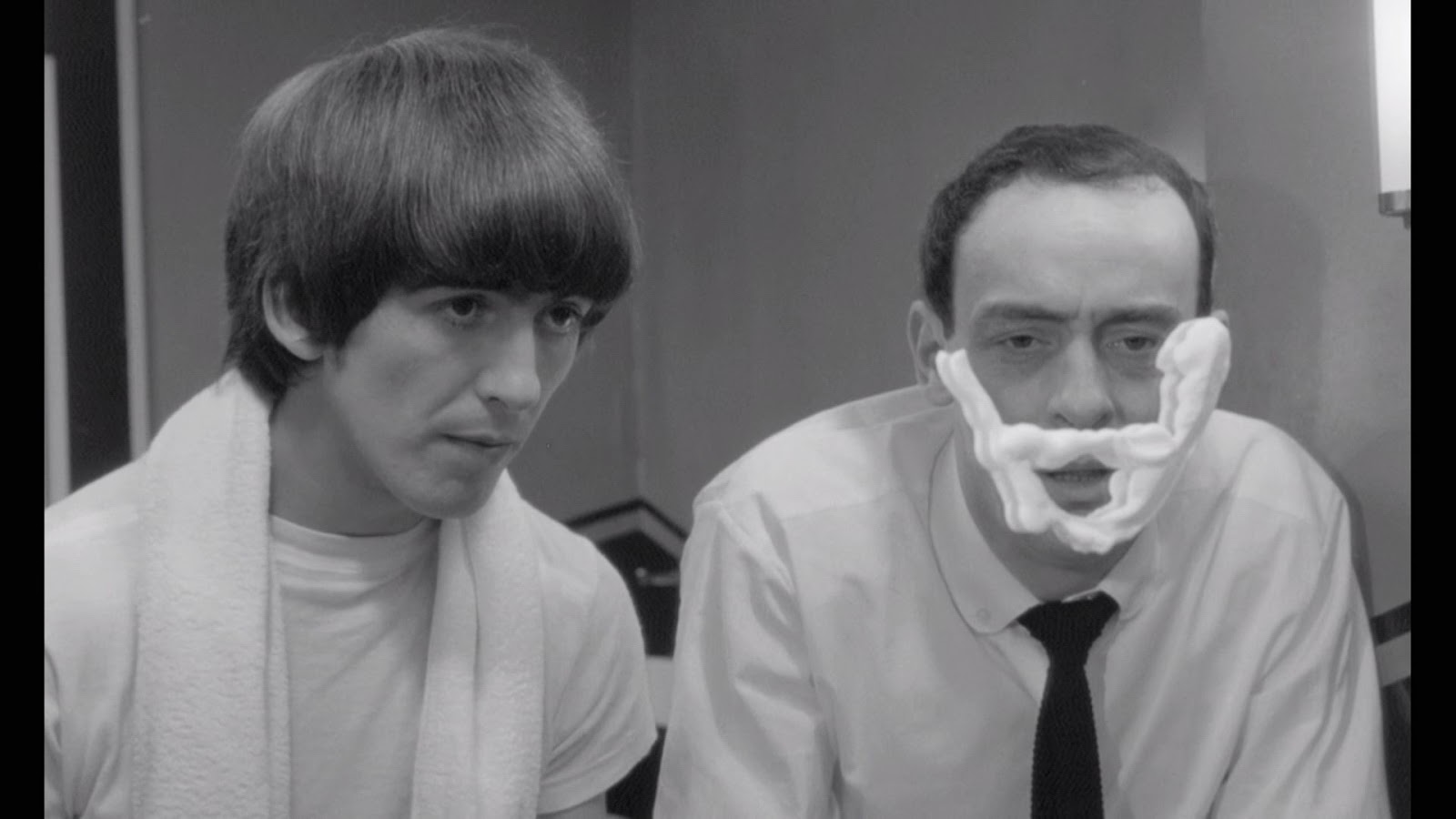What impact did “A Hard Day’s Night” have on cinematography and composition?
When Richard Lester signed on to direct A Hard Day’s Night (1964), the film that launched his career after just two previous features, it seems teaming up with The Beatles became the perfect move at the perfect moment. With a minimal budget and even less time, Lester produced a film that went far beyond the expectations of the project. He utilized a cinéma vérité approach to follow The Beatles in a “typical” day of their lives with camerawork that borrowed heavily from French New Wave cinema. The result is a film style heavily ingrained into pop culture of the past 50 years.
French New Wave is a blanket term for particular filmmakers and their trademark styles that emerged in the late 1950s and 1960s. Encyclopaedia Britannica defines it as “characterized by a fresh brilliance of technique that was thought to have overshadowed their subject matter. Although it was never clearly defined as a movement, the New Wave stimulated discussion about the cinema and helped demonstrate that films could achieve both commercial and artistic success.”
The New Wave approach was perfect for A Hard Day’s Night; a film designed to be an exploitative piece of commercial art possessing no real narrative. Embracing the low budget and resources he was provided, Richard Lester drew on New Wave techniques to create a film rich with style that compensated for limited substance. The style itself became the substance, and the resulting work impacted cinematography and composition in ways that still resonate today. In the last five decades of pop culture, a debt is owed to A Hard Day’s Night, particularly in the realm of music-related production.
A Hard Day’s Night is often credited with creating the music video. In 1984, as music videos were erupting into the cultural landscape with the mushrooming popularity of MTV, the network awarded Lester by dubbing him “The Father of the Music Video” for his work on this film. Within A Hard Day’s Night, Lester implants vignettes that, if extracted from the overall piece, suit as standalone music videos. The “Can’t Buy Me Love” scene where the group has fun in a field, the band jamming in the back of a train to “I Should Have Known Better”—these are beautiful, individual moments are the model upon which countless music videos were eventually based.

The Dissolve writes, “What impresses me most about A Hard Day’s Night’s aesthetic is how elastic it is. Some scenes could be pulled from a documentary on Beatlemania (those screaming and crying girls don’t look like they needed much direction), while others are like something out of a Looney Tunes cartoon, like when The Beatles pester a grumpy square on the train by magically transporting out of the compartment window to run alongside the tracks. Somehow, Lester seamlessly marries the two halves together.”
The film was shot with as many as six cameras recording simultaneously. Lester essentially let his camera operators do as they pleased, compiling a multitude of angles and viewpoints for each scene. This not only provided more framework for music videos to utilize later, but allowed the crew to capture moments they wouldn’t otherwise have seen. They nabbed stolen moments that added to the authenticity of the production and its subjects. And then, there was the way all this material was put together. Stylistic movements flash from slow-motion to super-speed, whip-pans and zooms, helicopter shots to hand cameras, all wonderfully connected.
Roger Ebert writes, “Lester did not invent the techniques used in A Hard Day’s Night, but he brought them together into a grammar so persuasive that he influenced many other films. Today when we watch TV and see quick cutting, hand-held cameras, interviews conducted on the run with moving targets, quickly intercut snatches of dialogue, music under documentary action and all the other trademarks of the modern style, we are looking at the children of A Hard Day’s Night.”
Lester’s use of jump cuts and pairing cuts to the beats of the paired music was highly original, and became an obvious staple of music video production. He also interjected the film with plenty of silly humor, allowed for the occasional blunder to remain in the film, and included bits that broke the fourth wall. French New wave influence is felt in this renegade, freewheeling approach to editing. The style was, however, fairly localized to French cinema before Lester toyed with it. Utilizing such a raw and lawless filmmaking approach in a widely-seen mainstream movie about the most influential band in the history of music was bold, and exploded the New Wave approach upon the world. Filmmakers would play with its methods of experimentation for decades.

A Hard Day’s Night also introduced a new form of humor on audiences, particularly Americans. Vulture writes, “A Hard Day’s Night displays something of the deadpan slapstick of Buster Keaton (particularly in some of Ringo’s scenes) and the wise-ass dialogue of the Marx Brothers. All these elements, crossed with the charisma of the Beatles, created a toss-everything-at-the-wall-and-see-what-sticks style of humor — throwaway gags mixed with surreal exchanges mixed with wisecracks — that wound up influencing comedy for decades, helping fuel everything from Monty Python to The Kentucky Fried Movie (1977).”
It’s a big claim to credit Ringo Starr as a comedic influence on John Cleese. But The Beatles did have an undeniable aptitude for being on camera and acting, even if it was just as comedic versions of their own personalities. Paying your own character can be tough—just think of the hideous A Hard Day’s Night-inspired disaster known as Spice World (1997).
A Hard Day’s Night feels like a film where a camera crew stumbled upon The Beatles and started filming them. The authenticity of that sensation is a testament to the success of Lester’s application of New Wave influence, and what would become his own brand of off-the-cuff storytelling. A Hard Day’s Night is now revered as one of cinema’s great films, despite being a 90-minute commercial that doesn’t have a plot. Who knows whether or not Lester had any idea his decisions would have such a lasting impact, but they influenced so much of the world we now see on a daily basis that it’s impossible to credit the film as anything less than revolutionary.
As The Beatles’ song “Revolution” would say four years later, “we all want to change the world.”

